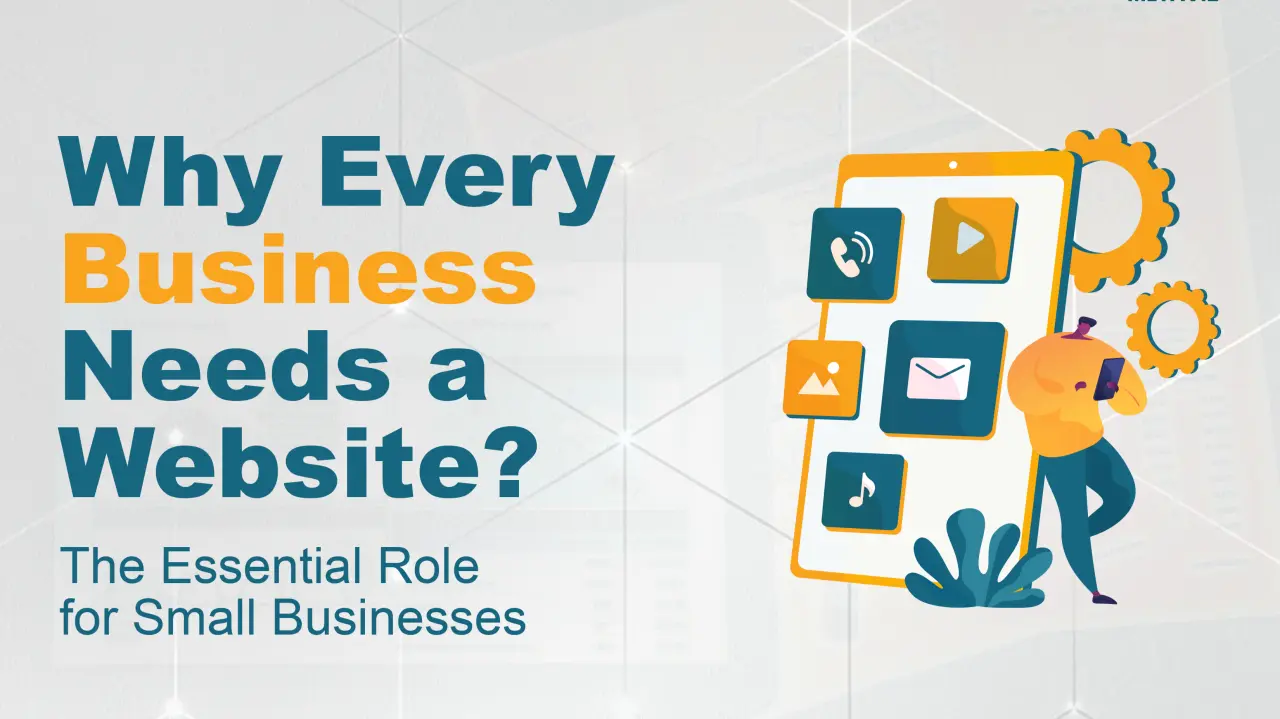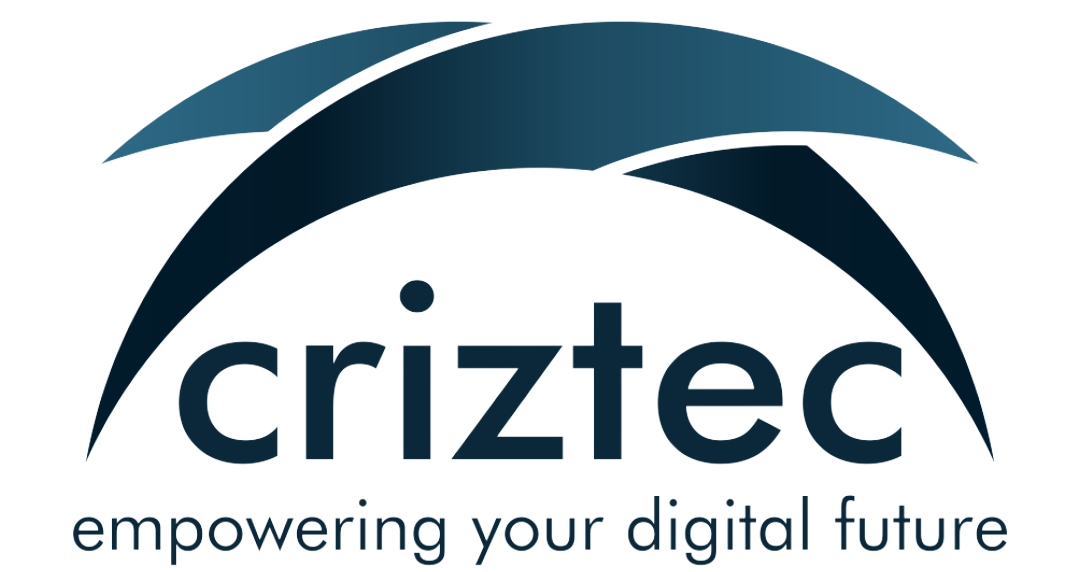· Digital Marketing · 13 min read
Do Small Businesses Really Need a Website in 2025? Yes – Here's Why
Discover why every small business in 2025 needs a website. Learn about credibility, marketing benefits, and how to overcome common objections about cost and complexity.

Do Small Businesses Really Need a Website in 2025? Yes – Here’s Why
In an era where social media platforms dominate our daily interactions and online marketplaces like Amazon and Etsy make selling easier than ever, many small business owners are asking a critical question: “Do I really need a website in 2025?”
With the rise of Instagram Shopping, Facebook Business Pages, and no-code tools that promise instant online presence, it’s tempting to think that traditional websites are becoming obsolete. However, the reality is quite the opposite. In 2025, having your own website isn’t just beneficial—it’s essential for long-term business success.
Whether you’re a local bakery, a freelance consultant, or a growing e-commerce store, this comprehensive guide will show you exactly why investing in a website is one of the smartest decisions you can make for your business this year.
Why Having a Website Still Matters in 2025
Complete Ownership and Control of Your Online Presence
When you rely solely on social media platforms or third-party marketplaces, you’re essentially building your business on rented land. Your website is the only digital property you truly own. Here’s why this matters:
- Platform Independence: Social media algorithms change constantly. What works today might not work tomorrow.
- No Risk of Account Suspension: Imagine losing your Instagram account with 10,000 followers overnight—it happens more often than you think.
- Full Creative Control: Design your site exactly how you want, without platform restrictions or template limitations.
- Direct Customer Relationships: Build your email list and customer database without platform interference.
Builds Instant Credibility and Trust
In 2025, consumers are more skeptical than ever about online businesses. 84% of consumers consider a business more credible if it has a professional website compared to just a social media presence. Here’s what a website signals to potential customers:
- Legitimacy: A professional domain name (yourname.com) immediately sets you apart from competitors using generic social media handles.
- Transparency: Detailed about pages, contact information, and business policies build trust.
- Social Proof: Customer testimonials, reviews, and case studies displayed prominently on your site.
- Professional Image: A well-designed website positions you as an established business, not just a hobby.
Your 24/7 Digital Business Card
Unlike social media posts that get buried in feeds, your website works around the clock to represent your business:
- Always Accessible: Customers can find information about your services at 3 AM on a Sunday.
- Comprehensive Information: Display your full service catalog, pricing, and contact details in one place.
- Lead Generation: Contact forms and booking systems capture leads even when you’re sleeping.
- Global Reach: Attract customers beyond your immediate geographic area.
Superior Search Engine Visibility
Local SEO is crucial for small businesses, and having your own website gives you a significant advantage:
- Google My Business Integration: Your website strengthens your local search presence.
- Keyword Optimization: Target specific search terms your customers use.
- Local Search Results: Appear in “near me” searches and Google Maps listings.
- Content Marketing: Blog posts and service pages help you rank for industry-related searches.
Better Analytics and Marketing Control
With your own website, you get access to detailed analytics that social media platforms simply can’t provide:
- Customer Journey Tracking: See exactly how visitors interact with your content.
- Conversion Optimization: Test different layouts, headlines, and calls-to-action.
- Email Marketing Integration: Build subscriber lists and automate follow-up campaigns.
- Retargeting Capabilities: Reach visitors who didn’t convert on their first visit.
Key Benefits for Small Businesses
Enhanced Credibility in a Digital-First World
Research shows that 75% of consumers judge a company’s credibility based on its website design. In 2025, not having a website is like not having a phone number in 1995. Here’s how a website enhances your credibility:
- Professional Email Addresses: info@yourbusiness.com looks infinitely more professional than yourbusiness123@gmail.com.
- Detailed Service Descriptions: Explain exactly what you do and how you help customers.
- Team Bios and Credentials: Showcase your expertise and experience.
- Business Information: Display your physical address, business hours, and contact methods.
Powerful Marketing Hub
Your website serves as the central hub for all your marketing efforts:
- SEO Optimization: Rank higher in Google searches for your target keywords.
- Google Ads Landing Pages: Direct paid traffic to specific, conversion-optimized pages.
- Email Marketing: Capture leads and nurture them through automated sequences.
- Content Marketing: Share valuable content that positions you as an industry expert.
- Social Media Integration: Drive traffic from social platforms to your website where you have full control.
Direct Sales Without Marketplace Fees
E-commerce platforms take a significant cut of your sales. Amazon charges up to 15% in fees, while your own website might cost just 2.9% in payment processing. Consider these advantages:
- Higher Profit Margins: Keep more of what you earn.
- Customer Data Ownership: Build relationships with buyers for repeat business.
- Pricing Control: Set your own prices without platform restrictions.
- Brand Experience: Control every aspect of the customer journey.
Comprehensive Customer Support
Modern websites can provide exceptional customer service through:
- AI Chatbots: Answer common questions instantly, 24/7.
- FAQ Sections: Reduce support tickets by addressing common concerns.
- Contact Forms: Organize customer inquiries and respond efficiently.
- Resource Libraries: Provide downloadable guides, tutorials, and documentation.
- Live Chat Integration: Offer real-time support during business hours.
Common Objections (and Why They’re Wrong)
“It’s Too Expensive”
This is the biggest myth about websites in 2025. Modern website solutions are more affordable than ever:
- WordPress.com: Starting at £3/month for basic business needs.
- Wix: Professional plans from £11/month with e-commerce capabilities.
- Squarespace: Beautiful templates starting at £10/month.
- Shopify: E-commerce focused, starting at £23/month.
- Webflow: Designer-friendly platform with competitive pricing.
Compare this to the cost of:
- One month of Facebook advertising: £400–£1,600
- A single trade show booth: £800–£4,000
- Traditional print advertising: £400–£2,400
Your website investment pays for itself by reducing dependency on expensive advertising channels.
”I’m Already on Instagram and Facebook”
While social media is important, relying solely on these platforms is risky:
Platform Limitations:
- Algorithm changes can drastically reduce your organic reach
- Limited customization options
- No control over user experience
- Difficult to showcase detailed product/service information
The Reality Check:
- Facebook organic reach: Only 5.2% of your followers see your posts
- Instagram engagement: Declining year over year
- Platform Dependency: Your account could be suspended or hacked
The Smart Approach: Use social media to drive traffic to your website, not replace it.
”I Don’t Need It for My Local Store”
This is perhaps the most dangerous misconception. Local businesses benefit enormously from websites:
Local SEO Benefits:
- 46% of Google searches are looking for local information
- Google My Business listings with website links get 70% more clicks
- “Near me” searches have grown 200% in the past two years
Real-World Impact:
- Local restaurants with websites see 30% more reservations
- Service businesses get 25% more appointment bookings
- Retail stores experience 40% more foot traffic from online discovery
”It’s Too Complicated to Maintain”
Modern website platforms have eliminated technical complexity:
User-Friendly Features:
- Drag-and-drop editors
- Automatic updates and security
- Mobile-responsive templates
- Built-in SEO tools
- One-click integrations
Time Investment: Most small business websites require just 1-2 hours per month for basic maintenance and content updates.
Website Alternatives (and Why They’re Not Enough)
Social Media Platforms
What They’re Good For:
- Building community and engagement
- Sharing behind-the-scenes content
- Customer service and communication
- Visual storytelling
Why They’re Not Enough:
- Limited control over design and functionality
- Algorithm dependency for visibility
- Difficult to showcase comprehensive product/service information
- No ownership of customer data
Google Business Profile
What It’s Good For:
- Local search visibility
- Customer reviews and ratings
- Basic business information
- Google Maps integration
Why It’s Not Enough:
- Very limited customization
- Minimal space for detailed information
- No e-commerce capabilities
- Limited analytics and tracking
Online Directories
What They’re Good For:
- Additional backlinks and citations
- Industry-specific visibility
- Local SEO support
Why They’re Not Enough:
- Generic templates with no customization
- Limited space for comprehensive information
- No direct customer relationship building
- Potential for outdated information
The Bottom Line: These platforms should supplement, not replace, your website. They work best when they direct potential customers to your main website where you can control the entire experience.
Real-World Success Stories
Local Restaurant Transformation
Maria’s Authentic Italian Bistro was struggling to compete with chain restaurants despite having the best pasta in town. After launching a simple website with:
- Online menu with mouth-watering photos
- Reservation system integration
- Customer review showcase
- Blog featuring recipe stories
Results after 6 months:
- 45% increase in reservations
- 30% boost in takeout orders
- Featured in local “best restaurant” articles
- Expanded catering business through website inquiries
Home Services Success
Johnson’s Handyman Services relied entirely on word-of-mouth referrals until creating a website featuring:
- Before/after project galleries
- Service area mapping
- Online booking system
- Customer testimonial videos
Results after 1 year:
- 200% increase in service calls
- Expanded from 1 to 3 service areas
- Premium pricing due to professional image
- Reduced dependency on expensive lead generation services
E-commerce Breakthrough
Handcrafted Jewelry by Sarah was selling exclusively on Etsy until launching her own website:
- Custom product photography
- Brand storytelling
- Email marketing integration
- Direct customer relationships
Results after 8 months:
- 60% higher profit margins (no marketplace fees)
- Built email list of 2,500 subscribers
- Launched successful product lines based on website analytics
- Secured wholesale partnerships through professional presentation
How to Get Started Easily in 2025
Step 1: Choose Your Domain Name
Your domain name is your digital address. Keep it:
- Short and memorable: Aim for 2-3 words maximum
- Easy to spell: Avoid complex words or unusual spellings
- Brand-relevant: Include your business name or main keyword
- Professional: Stick with .com, .net, or industry-specific extensions
Pro Tip: Use tools like Namecheap or GoDaddy to check availability and purchase your domain for around £7-15/year.
Step 2: Select the Right Platform
For Beginners:
- Wix: Excellent drag-and-drop editor, great templates
- Squarespace: Beautiful designs, perfect for creative businesses
- WordPress.com: User-friendly version of the world’s most popular platform
For E-commerce:
- Shopify: Industry leader with excellent support
- WooCommerce: Flexible WordPress-based solution
- Square Online: Free option with paid upgrades
For Advanced Users:
- Webflow: Designer-friendly with powerful customization
- WordPress.org: Ultimate flexibility with full control
Step 3: Essential Pages to Create
Homepage:
- Clear value proposition
- Professional hero image or video
- Call-to-action buttons
- Trust signals (testimonials, logos, certifications)
About Page:
- Your story and mission
- Team member bios
- Company values
- Professional photos
Services/Products Page:
- Detailed descriptions
- Pricing information (if applicable)
- High-quality images
- Customer benefits focus
Contact Page:
- Multiple contact methods
- Contact form
- Business hours
- Physical address (if applicable)
- Google Maps integration
Testimonials/Reviews Page:
- Customer success stories
- Before/after case studies
- Video testimonials
- Review aggregation from multiple platforms
Step 4: Ensure Mobile Responsiveness
Critical Statistics:
- 58% of web traffic comes from mobile devices
- Google prioritizes mobile-friendly websites in search results
- 57% of users won’t recommend a business with a poorly designed mobile site
Mobile Optimization Checklist:
- Test your site on multiple devices
- Ensure fast loading times (under 3 seconds)
- Use large, touchable buttons
- Optimize images for mobile viewing
- Implement mobile-friendly navigation
Step 5: Basic SEO Setup
On-Page Optimization:
- Include target keywords in page titles
- Write compelling meta descriptions
- Use header tags (H1, H2, H3) properly
- Optimize image alt tags
- Create keyword-rich content
Local SEO (for local businesses):
- Include city/region names in content
- Create location-specific pages
- Claim and optimize Google My Business
- Encourage customer reviews
- Build local citations
Technical SEO:
- Install Google Analytics and Search Console
- Submit XML sitemap to Google
- Ensure fast loading speeds
- Use SSL certificates (https)
- Create clean, descriptive URLs
Advanced Tips for 2025
Leverage AI and Automation
- AI Chatbots: Provide instant customer support
- Automated Email Sequences: Nurture leads without manual effort
- Content Generation: Use AI tools to help create blog posts and product descriptions
- Personalization: Show relevant content based on visitor behavior
Voice Search Optimization
With the growing popularity of voice assistants:
- Optimize for conversational keywords
- Create FAQ pages answering common questions
- Focus on local “near me” search terms
- Use natural language in your content
Video Integration
- Homepage Hero Videos: Increase engagement by 80%
- Product Demonstrations: Show your offerings in action
- Customer Testimonials: Build trust through authentic stories
- Behind-the-Scenes Content: Humanize your brand
Common Mistakes to Avoid
1. Overcomplicating Your First Website
The Problem: Trying to include every possible feature from day one.
The Solution: Start with essential pages and add features gradually based on user feedback and business needs.
2. Neglecting Website Maintenance
The Problem: Creating a website and never updating it.
The Solution: Schedule monthly content updates, security checks, and performance optimization.
3. Ignoring Analytics
The Problem: Not tracking website performance or user behavior.
The Solution: Set up Google Analytics, monitor key metrics, and make data-driven improvements.
4. Poor Quality Content
The Problem: Using generic, low-quality content that doesn’t engage visitors.
The Solution: Invest in professional copywriting or learn to write compelling, customer-focused content.
5. Missing Clear Calls-to-Action
The Problem: Visitors don’t know what action to take next.
The Solution: Include clear, prominent calls-to-action on every page (Contact Us, Get Quote, Shop Now, etc.).
The Cost of NOT Having a Website
Consider what you’re losing every day without a professional website:
Lost Credibility
- 40% of consumers won’t engage with businesses that don’t have websites
- Competitors with websites appear more established and trustworthy
- Missing out on referrals from satisfied customers who can’t easily share your information
Missed Opportunities
- Potential customers searching online can’t find you
- No way to capture leads outside of business hours
- Unable to showcase your full range of products/services
- Missing out on organic search traffic
Higher Marketing Costs
- Increased dependence on expensive advertising platforms
- No owned media to reduce paid advertising dependency
- Inability to retarget website visitors
- Limited options for content marketing and SEO
Competitive Disadvantage
- Competitors with websites capture market share
- Professional image gap compared to industry peers
- Limited ability to adapt to changing consumer behaviors
- Reduced options for business growth and expansion
Measuring Your Website’s Success
Key Performance Indicators (KPIs) to Track
Traffic Metrics:
- Monthly website visitors
- Page views and session duration
- Traffic sources (organic, social, direct, referral)
- Mobile vs. desktop usage
Conversion Metrics:
- Contact form submissions
- Phone calls generated
- Email newsletter signups
- Quote requests or booking
Business Impact:
- Leads generated through the website
- Sales attributed to online presence
- Customer acquisition cost reduction
- Overall business growth correlation
Tools for Monitoring Success
Free Tools:
- Google Analytics: Comprehensive website analytics
- Google Search Console: Search performance and optimization insights
- Google My Business Insights: Local search performance
- Facebook Insights: Social media traffic analysis
Paid Tools:
- SEMrush: Advanced SEO and competitor analysis
- Hotjar: User behavior and heat mapping
- Mailchimp: Email marketing analytics
- CallRail: Phone call tracking and attribution
Future-Proofing Your Website
Emerging Trends for 2025 and Beyond
Artificial Intelligence Integration:
- Chatbots for customer service
- Personalized content recommendations
- Automated email marketing
- Predictive analytics for business decisions
Voice Search Optimization:
- Conversational keyword targeting
- FAQ-style content structure
- Local search optimization
- Natural language processing
Sustainable Web Design:
- Eco-friendly hosting options
- Optimized images and code for faster loading
- Reduced carbon footprint considerations
- Green hosting certifications
Enhanced User Experience:
- Interactive elements and animations
- Personalized user journeys
- Accessibility improvements
- Progressive web app features
Staying Competitive
Regular Updates:
- Refresh content quarterly
- Update design elements annually
- Monitor competitor websites
- Stay current with industry trends
Technology Adoption:
- Implement new features as they become mainstream
- Upgrade hosting and security regularly
- Optimize for emerging devices and platforms
- Integrate with new marketing tools and platforms
Conclusion: Why Every Small Business Needs a Website in 2025
The question isn’t whether your small business needs a website in 2025—it’s how quickly you can get one launched. In today’s digital landscape, a website isn’t just a nice-to-have marketing tool; it’s the foundation of your business’s credibility, growth, and long-term success.
Here’s what we’ve learned:
✅ Websites provide ownership and control that social media platforms and marketplaces simply cannot offer
✅ Credibility and trust are immediately enhanced with a professional online presence
✅ Cost concerns are outdated—modern website solutions are more affordable and user-friendly than ever
✅ Local businesses benefit enormously from improved search visibility and customer accessibility
✅ Marketing opportunities multiply when you have your own digital headquarters
✅ Long-term business growth is significantly enhanced with proper online infrastructure
The Real Cost of Waiting
Every day you delay launching your website is another day you’re:
- Losing potential customers to competitors
- Missing out on organic search traffic
- Paying higher costs for alternative marketing methods
- Appearing less credible to potential clients
- Limiting your business growth potential
Start Small, But Start Now
You don’t need a complex, expensive website to begin reaping these benefits. A simple, professional site with your core pages can be launched within a week and improved over time. The key is taking that first step.
Your action plan:
- This week: Choose your domain name and hosting platform
- Next week: Create your essential pages (Home, About, Services, Contact)
- This month: Optimize for mobile and basic SEO
- Ongoing: Add content, gather customer feedback, and continuously improve
Remember, the best website is the one that exists. A simple, professional site that accurately represents your business is infinitely better than the perfect website that never gets built.
The digital future belongs to businesses that embrace it today. Your competitors are already online, your customers are searching for solutions, and every moment you wait is a moment they’re choosing someone else.
Don’t let 2025 be another year of “maybe next year.” Your business deserves the credibility, growth opportunities, and customer reach that only a professional website can provide.
Ready to get started? Choose a platform, register your domain, and begin building the online presence your business needs to thrive in 2025 and beyond. Your future customers are waiting to find you—make sure they can.
Need help creating a professional website for your small business? Contact our team for expert guidance and affordable web development solutions tailored to your specific needs and budget.




